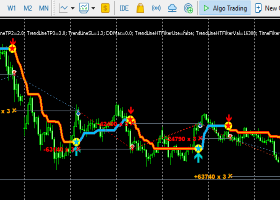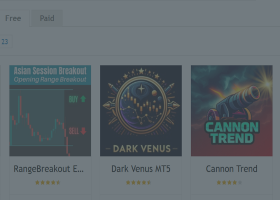
Euro Firm Around $1.10; Market Frets ECB Disappointment - Analysts
Despite widespread expectations of European Central Bank easing at this week's meeting, the euro maintained a firm tone around $1.1000 Wednesday.
The market fretted a repeat of the December meeting, where the euro popped over four big figures higher when the ECB did not deliver what global investors wanted, traders explained.
Current expectations are that the ECB will announce a deposit rate cut of between 10 and 20 basis points and expand the amount of asset purchase by E10 billion at least and potentially also extend the asset purchase program by another six months.
There has also been talk of a new Long Term Repo Operations (LTRO), as well as a "tiered" structure being introduced.
Capital Economic chief European economist Jonathan Loynes reminded that the ECB has already signaled that further easing is on the table this week.
"And while December's under-deliverance highlights the risk of another disappointment, the deteriorating economic outlook should persuade the Governing Council to be bolder this time," he said.
"We expect both a 20 basis point cut in its deposit rate and a E20 billion expansion of its monthly asset purchases," Loynes said.
BOA Merrill Lynch economists looked for the ECB to cut the deposit rate by 10 basis points, extend QE until September 2017 and increase asset purchases by E10 billion per month.
BOA Merrill FX strategists saw "short-term risks for the EUR as tilted to the downside from the ECB meeting."
"We would expect Draghi to use a very dovish tone and strengthen forward guidance to argue that the ECB is willing to do whatever it takes to reach its inflation target," they say.
The strategists also looked for ECB President Mario Draghi "to try his best to weaken the Euro that day, to avoid a second disappointment after easing policies again."
Current FX positioning also favors the euro downside, "with the market nowhere near the stretched short EUR position of last December."
Friday's CFTC data showed that speculative accounts had a net euro short of -68,541 contracts as of March 1, versus last week's net euro short of -46,857 contracts.
The net short of -182,845, seen Dec. 1, was the largest net euro short seen since May 5 when speculators had a net euro short of -190,127 contracts. Positions larger than 100,000 contracts are deemed extended.
The ECB met December 3, with net euro short positions overstretched at the time.
The euro closed at $1.0940 December 3, after seeing a range of $1.0524 to $1.0981 in the wake of the ECB decision announcing new easing measures.
In December, the central bank announced a 10 basis point deposit rate cut to 0.30%, an extension of monthly purchases of E60 billion to the end of March 2017 "or beyond, if necessary," and other easing measures.
Back then, some had expected a 15 or 20 basis point cut in the deposit rate, and others had looked for the central bank to expand its asset purchases beyond the current E60 billion per month.
The euro was trading at $1.1028 Wednesday afternoon, on the high side of a $1.0946 to $1.1030 range.
The pair remained underpinned by position squaring ahead of Thursday's ECB decision.
The euro stalled earlier ahead of Monday's lows near $1.0940, will will act as initial support. Tuesday's peaks near $1.1058 will act as euro resistance.
Yesterday, the euro vaulted its 200-day moving average, at $1.1045 currently, but could not close above that mark so today's close will be key in terms of technical direction.
From the euro peak of $1.1376, posted Feb. 11 at the peak of risk aversion and dollar selling, to the $1.0826 low posted March 2, the euro fell 4.8%. Since then, the pair has made slow progress higher.
This week, the euro has vaulted the 38.2% Fibonacci retracement of the February to March decline, at $1.1036, with the market now eyeing a move to the 50% retracement, at $1.1101 currently. The 61.8% Fibonacci retracement comes in at $1.1166.
"The $1.1060-$1.1070 area is key now to any further recovery," said analysts at Brown Brothers Harriman in a note.
"On the downside, the $1.0915-$1.0940 band may absorb the selling pressure ahead of the ECB meeting," they said.
A MNI Euro Insight piece, released earlier, stressed that the ECB "will need a bold move" to drive the euro much lower Thursday.
If the ECB does not roil Thursday, the focus will then shift to the Bank of Japan decision March 15 and the Federal Reserve decision March 16.
For the ECB, Goldman Sachs economists expected a "further cut in the deposit rate, a move towards tiering rates and an expansion in the bond purchase program," but stressed that, in light of "the broad-based move lower in yields across the European rates complex, it is unclear if markets will perceive this package of measures as incrementally dovish."
In terms of the other central bank, Goldman Sachs looked for no "fresh action" from the Fed and BOJ, but GS strategists noted "there are nevertheless important communication challenges in maintaining a friendly backdrop."
For example, the Fed will not want to be the cause of financial conditions retightening after easing in the past three weeks, they said.
The BOJ must decide what to do after the "unhelpful market reaction" to the move to negative interest on excess bank reserves in January, they said.
GS economists look for further BOJ rate cuts "into negative territory and additional ETF purchases, but this is unlikely to be seen until June," the strategists said.
Copyright © 2016 MNI
PS: Copy signals, Trade and Earn on Forex4you - https://www.share4you.com/en/?affid=0fd9105


